GANGNEUNG IN KOREA – 10 AWESOME THINGS TO DO
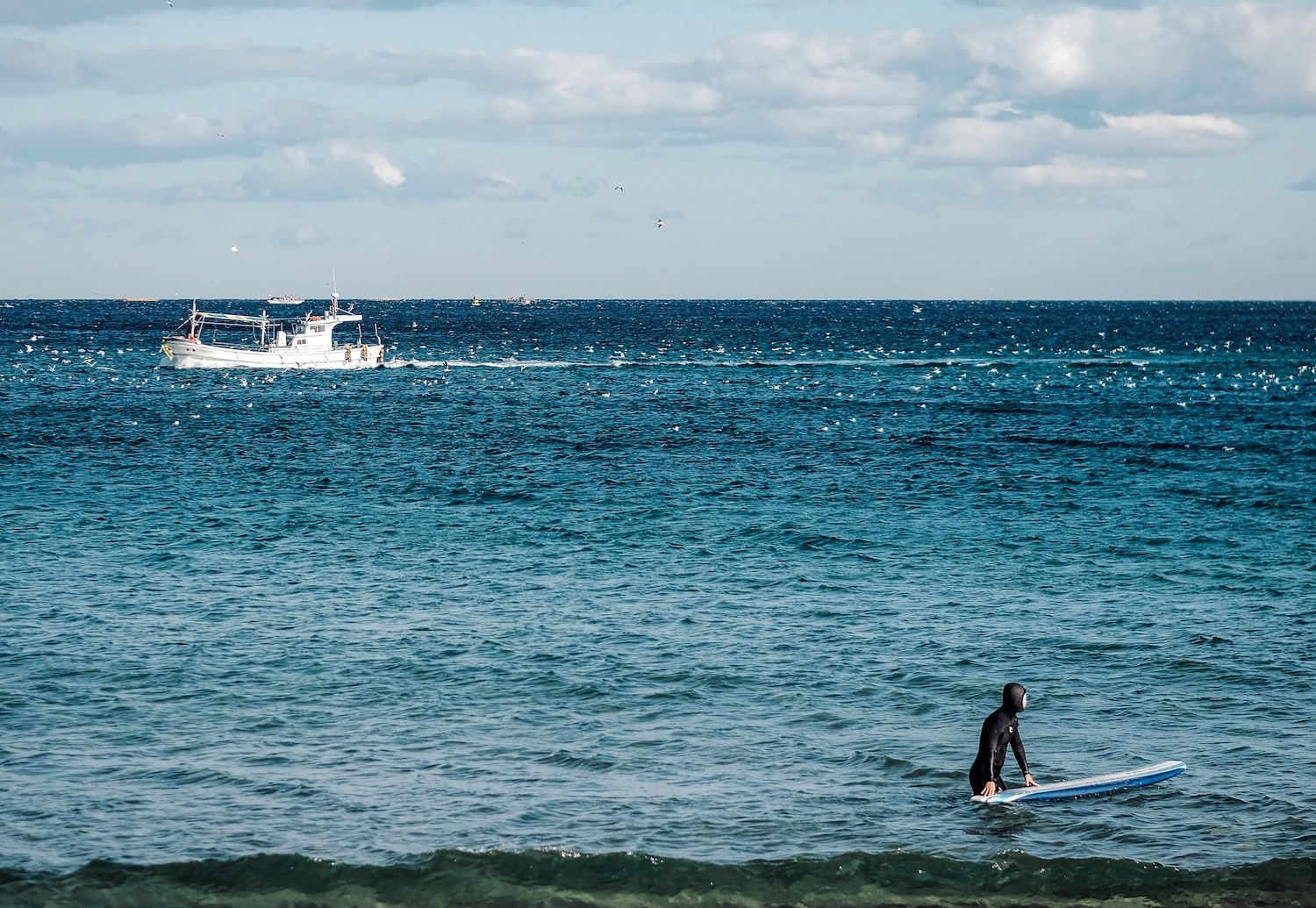
Why Visit Gangneung in Korea?
Gangneung boasts a delightful mix of stunning natural beauty, rich cultural heritage, and vibrant local cuisine. Whether you’re into history , a nature enthusiast, or a foodie, Gangneung has something for everyone!
At the foot of the Taebaek and Odaesan mountains, Gangneung has several cultural and historical treasures, such as the folk festival Danoje (recognized by UNESCO). It is also a young and dynamic place, with concerts, trendy coffees, surfing spots etc.

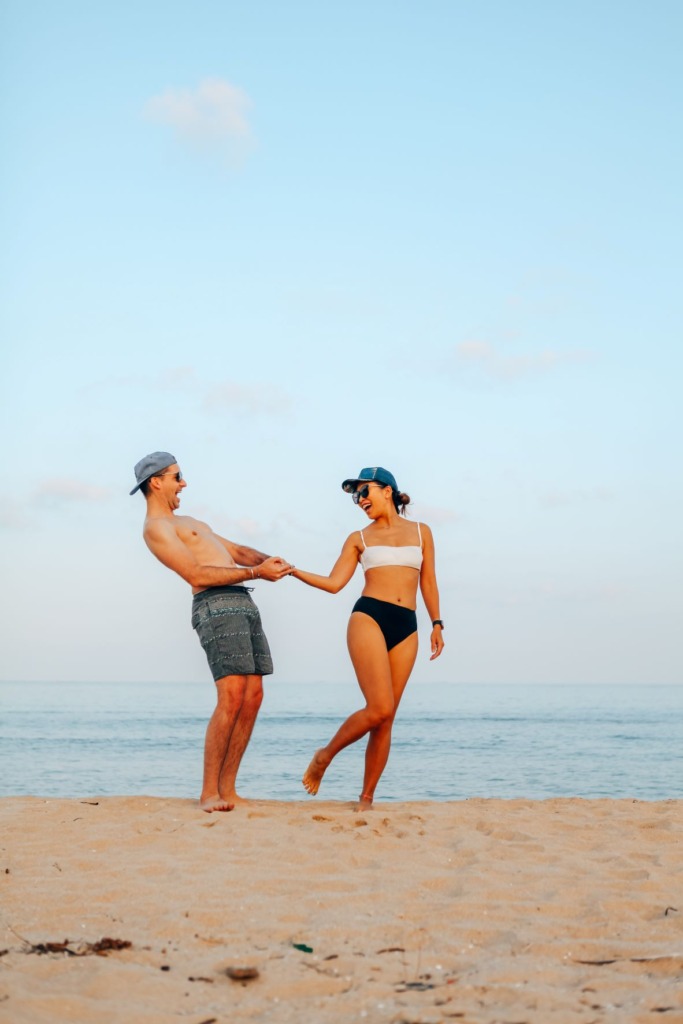

While living in Seoul for 3 years, we enjoyed going to Gangneung many times and in any season. The seaside is surprisingly beautiful with clean although cold water.
Key Takeaways from a visit to Gangneung in Korea
– Gangneung is renowned for its history, its culture and its beaches with turquoise waters.
– During the 2018 Pyeongchang Olympic and Paralympic Games, the city hosted ice hockey, curling, and skating. It also housed the athletes’ village and the press center.
– The first time we drove to Gangneung we were impressed with all the pine trees right beside the beaches. It is a great spot for morning or afternoon walk.
– There are many things to see in Gangneung and on the rest of the east coast!
The more we went to Gangneung, the more we started to explore the area. So here is our list of top things to do in Gangneung.
BEST THINGS TO SEE IN GANGNEUNG
1. Visit some of the most beautiful beaches in Korea
The east coast of South Korea is well known for its beautiful white sandy beaches. The official beach season starts at the beginning of July, but it is possible to swim in the clear and turquoise waters earlier if you want. However, the Koreans are wisely waiting for the official opening of the beaches.
Here are some of our favorite beaches near Gangneung
Jeongdongjin Sunrise Park
Jeongdonjin Sunrise Park is said to be the perfect place to start a day in Gangwon-do. To the point that people come especially from Seoul to see the sun appear in the sea. With its park of contemporary sculptures, its impressive boat hotel, its picturesque train station and its sandy beaches, Jeongdongjin Park is also known for its tranquility and its romantic environment.
In the 1st of January, it is the tradition that Koreans wake up early to see the sunrise. Some will climb a mountain to see it from a vantage point, however, many will drive to the east coast and especially to Jeongdonjin. It is said that this is the place to admire the sunrise first, as it is the easternmost part of South Korea.
Gyeongpodae Beach
Gyeongpodae Beach is the largest beach on the East Coast and is located approximately 1km from the Gyeongpodae Pavilion, famous for its view of the sunrise.
Gyeongpodae Beach is especially known for its fine, powdery white sand, perfect for beach goers who like to go barefoot. The beach is also known for its beautiful pine forest surrounded by sand.
In Gyeongpodae you can also have some fun with banana boats, jet skis, water skiing or other water sports activities. If you prefer to relax, the Gyeongpo tourist car will take you around Gyeongpodae to visit the surroundings.
Every year between the end of July and the beginning of August, the place also hosts the ‘Summer Music’ festival. This festival allows you to enjoy concerts by famous groups while enjoying various activities.
We enjoy going to Gyeongpodae, as this is one of the longest beach in South Korea, with white sand and beautiful surroundings. It is located the closest to Gangneung.
Naksan Beach
Naksan is also one of the most famous beaches near Gangneung. It is located in the nearby town of Yangyang. 1,810m long, the purity of its sand and clear turquoise water make it a beach appreciated by many visitors.
The area is also surrounded by a Pine forest, which makes the surroundings beautiful. The sunrise from the Uisangdae pavilion represents an unforgettable experience.
Nearby, it is also possible to visit Naksan Temple, one of the most beautiful in South Korea.
>>READ: FULL GUIDE TO VISIT NAKSAN TEMPLE
2. Visit the culture sites of Seongyojang and Ojukheon
Seongyojang residence
Having belonged to a wealthy family who came to settle in Gangneung over 300 years ago, the Seongyojang residence is perfectly located according to Korean geomancy: a water point at the front – Gyeongpo Lake – and mountains at the back.
The site is very well preserved and is part of the national folk cultural heritage of South Korea. It has hosted many poets and artists during the Joseon Dynasty, and it continues to host artistic and literary events. The residence has always been the largest in size, just after the royal palaces. It has several buildings, each with a specific function, and the houses with tiled roofs.
The residence and the park are beautiful and relaxing sights full of history. This is a must-see while in Gangneung.
Useful information about The Seongyojang residence in Gangneung:
- Address: 63 Unjeong-gil, Gangneung-si, Gangwon-do
- Opening: 9 a.m. to 6 p.m. (March to October); 9 a.m. to 5 p.m. (November to February)
- Price: adults, 5,000 won; students, 3000 won; children, 2000 won
Ojukheon House
Another aristocratic residence, Ojukheon, is just a 15-minute walk from Seongyojang. We choose to walk and cross the Gyeongpo Ecological Park and its magnificent fields. We are at the beginning of October, the colors are superb.
The term “Ojukheon” means “the house of black bamboo”. Indeed, this house was built in the heart of a black bamboo forest, at the beginning of the Joseon dynasty. It has kept its original architecture intact, which led to it being designated National Treasure No. 165 in 1963.
The residence has seen the birth of two emblematic Korean figures, which you surely have already seen if you ever held a Korean Won banknote: Shin Saimdang (1504-1551), an artist, which appears on the 50,000 won bills. His son Yulgok Yi I (1536-1584), a philosopher, on those of 5,000 won.
Ojukheon is not just the house in which these two great historical figures lived. It is also the location of the Gangneung Municipal Museum. A large part of their works are exhibited there, but there are also artefacts from the region, such as paintings and ceramics.
Useful Information:
- Address: 24, 3139 beon-gil, Yulgok-ro, Gangneung-si, Gangwon-do
- Opening: 8 a.m. to 6.30 p.m. in summer; from 9 a.m. to 6 p.m. in winter (ticket office closed one hour before site closure).
- Price: adults, 3,000 won, teenagers 2,000 won; children, 1,000 won. Free for over 65s.
3. Visit Haslla Art World Museum

Korea has a lot of museums. Whether it’s for design, contemporary art, natural history etc. Haslla Art World is a museum like no other. Between Gangneung and Jeongdongjin, overlooking the East Sea, the scenery itself is stunning.
The museum opened in 2003 and is the result of the work of a couple: Park Shin-Jang, a sculptor, and her husband – Choi Ok Yeung sculptor and professor who also designed the building with similarities of Center Pompidou in Paris. At least that’s what we felt.
All the pieces exhibited are made by Korean artists. Most of them – if not all – are influenced by Korean culture and history. Which makes the visit all the more interesting. This allows us to have another perspective on this society today. Most of the arts are provocative, slightly creepy, and also bizarre! That’s what Haslla World Art is so unique and special. The whole space is different and innovative and children will surely have fun there!
Klook.comAs mentioned before, this museum has a wonderful view of the East Sea and also a park with many sculptures. It’s a great place for a romantic date or a family day out with the kids. If you are hungry or thirsty, there is a café with a view of the sea and a 100% organic restaurant.
- Address: 24, 3139 beon-gil, Yulgok-ro, Gangneung-si, Gangwon-do
- Opening: Sun – Sat 9:00 am – 6:00 pm (These hours vary depending on the season).
- Price: adults, 3,000 won, teenagers 2,000 won; children, 1,000 won. Free for over 65s.
4. Visit Hwanseon Limestone Cave
The Hwanseon Limestone Cave is the largest of its kind in South Korea, and the second largest in Asia. On its 6.2 kilometers long, only 1600 meters are open to the public. Once inside you can see many small inland lakes, their waterfalls and their stalactites. Some stalactites resemble the Great Wall of China and others have very particular shapes.
The temperature of the cave varies between 12-24 ℃ in summer and 8-9 ℃ in winter. It takes about 30-40 minutes to visit the cave. The slopes can sometimes be steep and that is why the place can be difficult to access for the elderly and children. To access it, you usually take a monorail, which allows you to admire Mount Deokhang.
5. Go Surfing!
Although surrounded by the sea, it is not really known that South Korea can get some pretty good waves, especially in the winter. There are more and more surf schools opening along the East Coast of South Korea particularly. You don’t believe it? Well, check out this beautiful video which will make you wanna come to Korea and surf in the Winter.
We also wrote a full post here about the best places to surf in South Korea, check it out.
Actually, Winter has the best waves, but Spring and Autumn are also pretty good seasons for surfing on the East Coast. From Gangneung drive up north to find the most famous spots. Judko Beach is probably the best spot with decent and most regular waves. You can rent surfboards right in front of the beach.
Yangyang is also a pretty good spot (full post about Yangyang here). You can go on Sonyang Myeon Street, located right in front of the beach. There are also several places to rent surfboards. It’s a very nice beach, more wild and less touristy. The beach is called Dongho Haebyeon.
Before reaching Yangyang, you can also check out Surfyy Beach, it’s a trendy spot, with a bar on the beach, surf school and some bungalows if you want to stay overnight.
More about surfing in South Korea here.
6. Visit Naksansa Temple
The Naksansa Temple is one of the most beautiful places on the East Coast in the Gangwon-do region. It was built by the monk Euisang during the time of the Unified Kingdom of Silla.
The temple is dotted with national treasures as well as local cultural heritages such as the giant Haesugwaneumsang statue, the Hongnyunam rock where you can admire a representation of a Buddhist goddess rising from the waters, etc. With the magnificent landscapes around, many Korean artists use this place as a backdrop to design their works.
We wrote a full post about Naksansa Temple here.
7. Participate in Danoje Festival
Danoje festival was classified as an intangible heritage by UNESCO in 2005. It is indeed recognized as one of the festivals to transmit the folk culture of the Joseon dynasty. There are various events around the festival which spread over a period of one month in the city of Gangneung and at the top of Daegwallyeong. However, the main festival takes place over a period of one week in the center of Gangneung and near the Namdaecheon river.
The main attraction of the festival is in shamanistic rituals. The first day is marked by a spectacular commemorative parade involving more than 5,000 people in downtown Gangneung. During the festival, visitors can also enjoy the Gwanno masked theater as well as various shamanic songs and dances.
Special festival programs include “geun” (traditional Korean swing) competitions as well as traditional Korean wrestling. The festival also offers to “surichwi” rice cakes made during the festival. At the Nanjang market, open outside the Danoje Cultural Center, visitors can take advantage of the agricultural music competition, traditional games, circus shows, participatory events with gifts to be won, and so on. bring a festive touch to the city of Gangneung. In addition, this market is known as the largest temporary market in Korea and offers a large selection of products and crafts from all over the country.
This festival takes place between June 3 and June 10, 2019. The festival generally begins with the parade of the inhabitants in the streets of the city.
8. Enjoy some of the best coffee at Anmok beach
Chill out, enjoy the beach, and enjoy your coffee, life is good! Anmok Beach is most well known for its waterfront street full of amazing cafes.
Whenever we go to Gangneung a stop at Anmok Beach is a must.
9. Visit the most beautiful national park of South Korea: SEORAKSAN
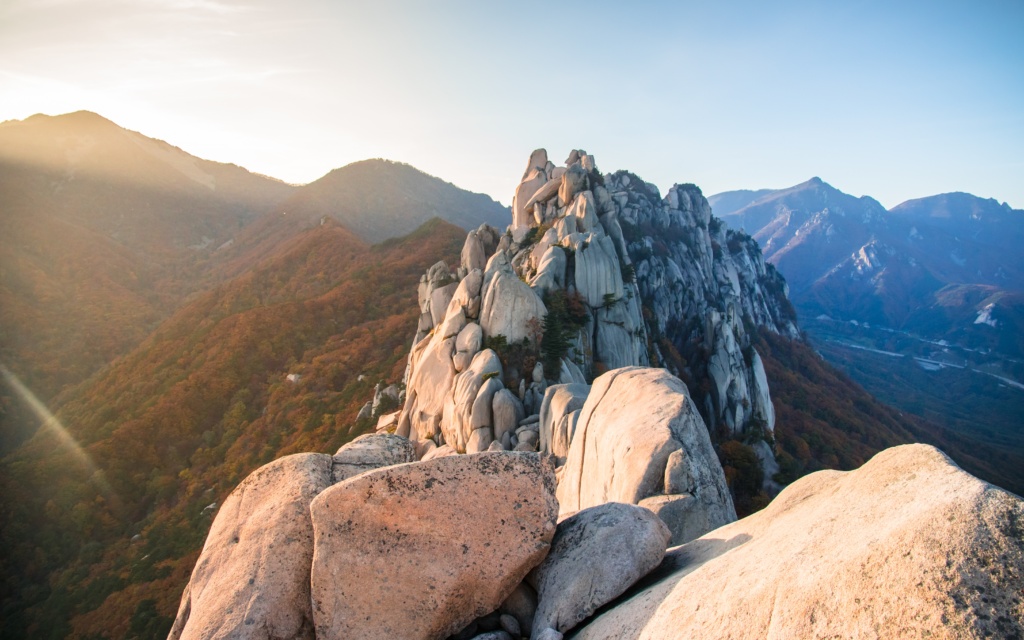
Seoraksan, 설악산 in Korean, is the highest peak in the Taebaek Mountains. The Taebaek Mountains range crosses the Korean peninsula from north to south along its east coast. Seoraksan National Park is located in the northeast of South Korea, near the city of Sokcho. The Seoraksan Mountain brings together around thirty peaks. The tallest of them is Daecheongbong (1,708 meters).
While few places remain truly wild in South Korea, Seoraksan National Park is surely one of the places where nature still prevails in the country. And that’s what makes Seoraksan Park one of the most beautiful parks in South Korea.
If you’ve never heard too much about Seoraksan National Park, here is a short summary of what to expect, here is what to do in Seoraksan:
- Hike to the top of Ulsanbawi for 360 ° views
- See the large bronze statue of Buddha in the valley
- Visit Sinheungsa temple as well as the small but charming Gyejo-am temple
- Take the cable car to go up to the Gwongeumseong fortress
- View beautiful waterfalls
A visit to Seoraksan, is a must while in South Korea. We absolutely loved it.
Here is our full guide for a visit to Seoraksan National Park.
10. Eat some seafood in Sokcho

Sokcho is a coastal city north of Gangneung and only 60km from the North Korean border. Sokcho is more a fishing town than a tourist attraction. The main draw here is the seafood. Koreans like to eat raw seafood. We loved it too. With a bit of soju, it blends perfectly.
1 restaurant on the waterfront is particularly popular, Abai Shikbang, as it appears in a popular K-Drama, Autumn in My Heart.
WHERE TO STAY IN GANGEUNG?
SL Hotel Gangneung

If what you want is a beautiful hotel facing the magnificent East Sea of South Korea and serving a wonderful breakfast, then SL Hotel Gangneung is all you need. This hotel is perfectly located in Gangneung just a few minutes walk to the beach. It is a great spot if you just want to relax during your holiday, but also an excellent starting point to Gangneung’s main attraction.
ST. John’s Hotel Gangneung
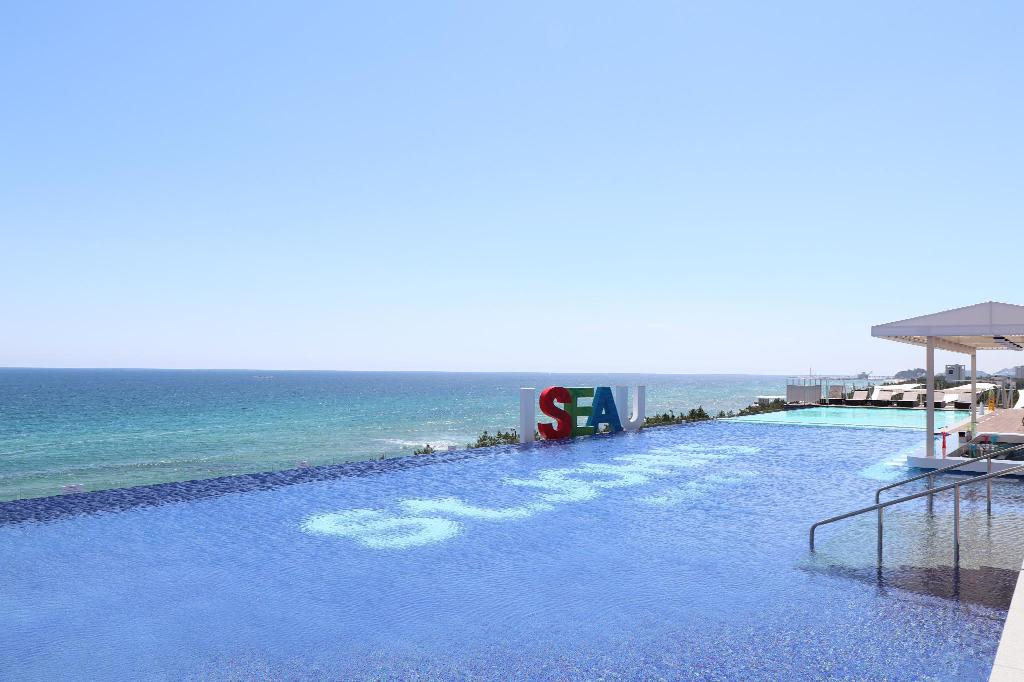
St John’s hotel in Gangneung is a very popular and famous hotel in Gangneung. The hotel is directly facing the main beach. When driving by car, there is a road going through the hotel, you can’t miss it if you are in Gangneung.
What we liked about St. John’s Hotel is the location, the very clear room but the highlight is the huge pool facing the sea. What a spot! We highly recommend this place if you stay in Gangneung.
HOW TO GET TO GANGEUNG?

By Train
One of the most convenient and scenic ways to reach Gangneung is by taking the train. The KTX (Korea Train Express) connects Seoul and Gangneung via the Gyeonggang Line, a high-speed rail line built in preparation for the 2018 Winter Olympics. Here’s how to do it:
- From Seoul, head to either Seoul Station or Cheongnyangni Station, both of which are well-connected to the KTX network.
- Purchase a KTX ticket to Gangneung at the station or online in advance. The ride takes approximately 2.5 to 3 hours.
- Enjoy the beautiful coastal landscapes as the train travels along the scenic route.
By Bus
If you prefer to travel by bus, there are several options available to get you to Gangneung:
- Express Bus: Gangneung Express Bus Terminal, located near the city center, serves as a major transportation hub for buses traveling to and from Gangneung. You can catch an express bus from various cities in South Korea.
- Intercity Bus: There are also intercity buses that connect Gangneung to other destinations within the country. The ride might take a bit longer, but it’s a cost-effective way to reach the city.
By Car
For those who enjoy the flexibility of driving, renting a car is an option to consider. Gangneung is accessible by road, and the journey is straightforward. From Seoul count about 2 hours to reach Gangeung.
The good thing about having your own car, is that you can visit more places in Gangeung.
Join a Tour
For more convenience, you can purchase an all inclusive 3 Days, 2 Nights tour. The tour will get you to most places in Gangeung, it includes hotels, food, transfer from Seoul and entrance to the main sites. More information below:
Klook.comIN CONCLUSION ABOUT GANGEUNG

We did not expect too much before going to Gangneung. We had no idea how the East Coast would look like.
However, we were pleasantly surprised, by the beauty of the sea, the great waves for surfing, beautiful national parks, awesome coffees, and great museums. We enjoyed Gangneung a lot, we came back many times while living in Seoul. It is our favorite weekend gateway.
Not too far from Gangneung, you will pass by Pyeongchang, the venue of the 2018 Olympic Games. You can check out more info about skiing in Korea here.
READ ALSO
- BEST SURF SPOTS IN SOUTH KOREA
- 25 BEST BEACHES IN SOUTH KOREA
- BEST SKI RESORTS IN SOUTH KOREA
- 10 BEST BEACHES IN JEJU
- HAEUNDAE THE MOST FAMOUS BEACH IN SOUTH KOREA
- TAEAN, A BEAUTIFUL NATIONAL PARK ON THE WEST COAST
- NAMHAE, A HIDDEN GEM TO DISCOVER IN THE SOUTH OF THE COUNTRY
- JEJU ISLAND THE JEWEL OF SOUTH KOREA
- BEST ADVENTURES NEAR SEOUL
- YANGYANG, THE BALI OF SOUTH KOREA


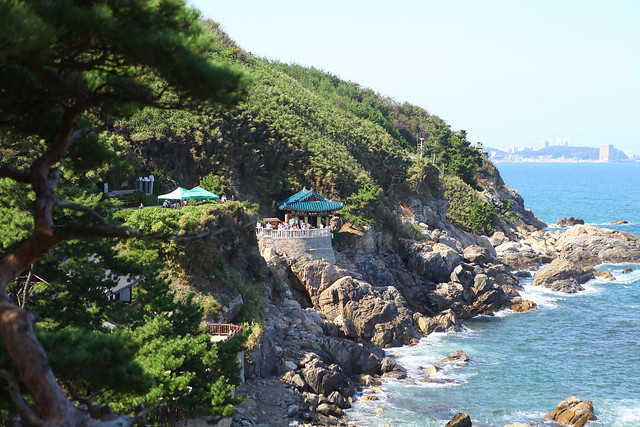
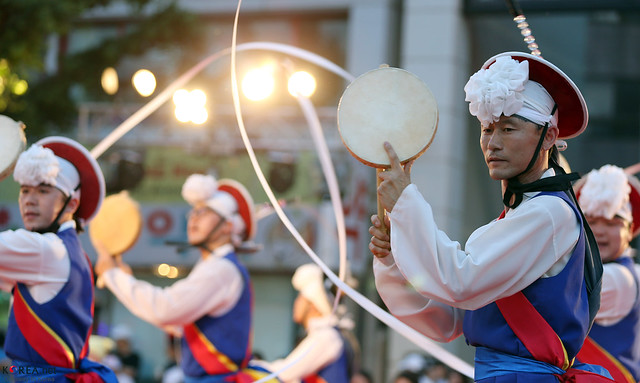






Love your idea